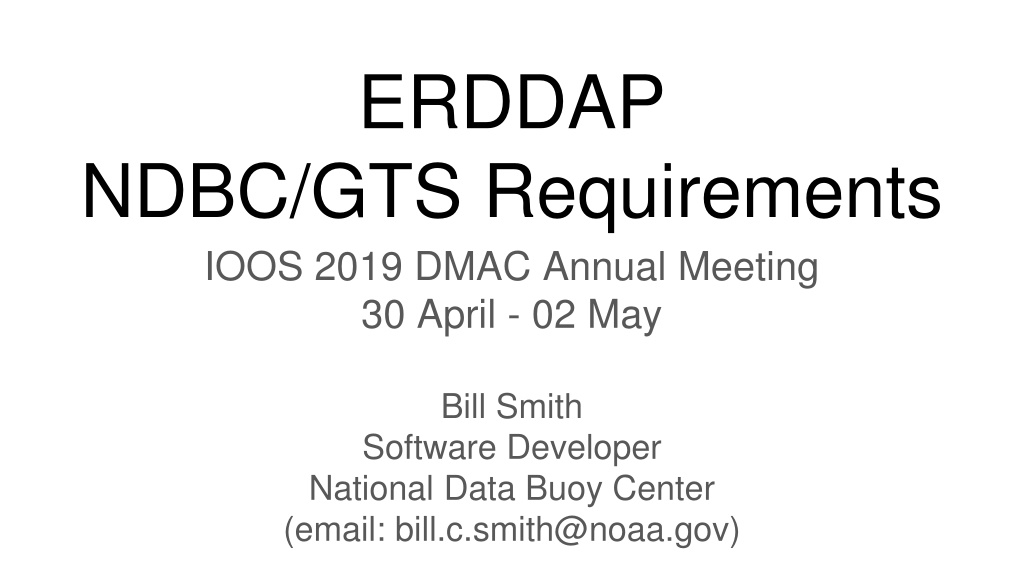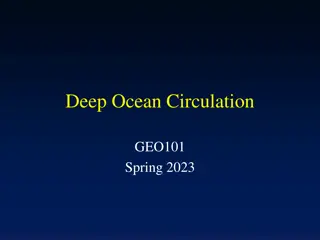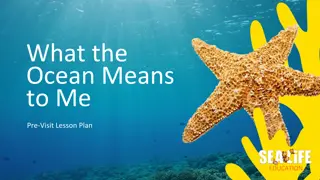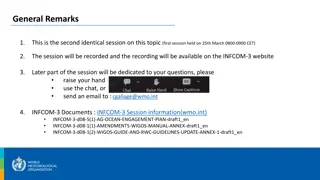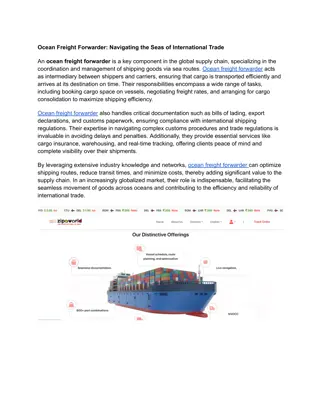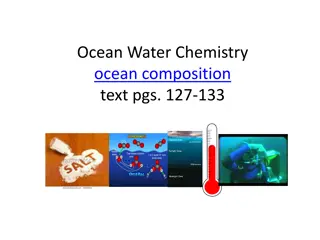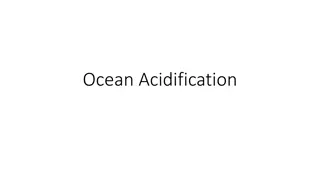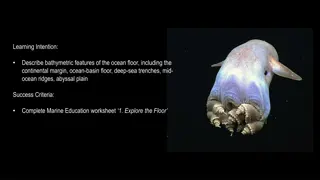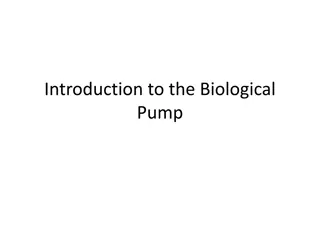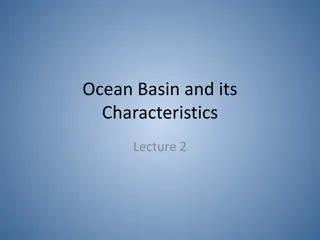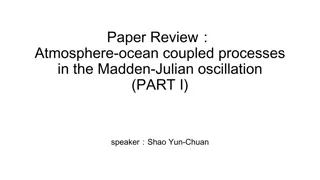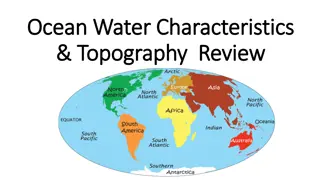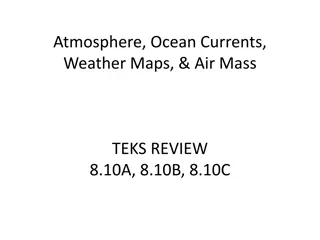Ocean Platform Data Management Guide
This guide provides information on WMO identification numbers, station metadata, ERDDAP data retrieval, and NetCDF requirements for ocean platforms. Learn about requesting WMO IDs, station details, dataset retrieval, and NetCDF formatting. Essential for managing and accessing ocean data effectively.
Download Presentation

Please find below an Image/Link to download the presentation.
The content on the website is provided AS IS for your information and personal use only. It may not be sold, licensed, or shared on other websites without obtaining consent from the author.If you encounter any issues during the download, it is possible that the publisher has removed the file from their server.
You are allowed to download the files provided on this website for personal or commercial use, subject to the condition that they are used lawfully. All files are the property of their respective owners.
The content on the website is provided AS IS for your information and personal use only. It may not be sold, licensed, or shared on other websites without obtaining consent from the author.
E N D
Presentation Transcript
ERDDAP NDBC/GTS Requirements IOOS 2019 DMAC Annual Meeting 30 April - 02 May Bill Smith Software Developer National Data Buoy Center (email: bill.c.smith@noaa.gov)
WMO Identification Number What is it: WMO identification numbers are allocated to ocean platforms reporting on the Global Telecommunication System (GTS). WMO numbers are allocated depending upon deployment area, and platform type (i.e. drifting buoys, moored buoys, ocean reference sites, and profiling floats). How to request one: Contact Dawn Petraitis at the National Data Buoy Center, Phone: 228-688-2940, Email: dawn.petraitis@noaa.gov Format of WMO Id: In the case of moored buoys, the WMO Id will either be a 5 or 7-digit number. Coastal stations with have a CMAN Id, which consists of 4 characters and 1 digit.
Station Metadata Station name Station location (latitude/longitude) Owner Elevation (meters above mean sea level) List of measurements/Sensors Sensor heights (meters above or below station elevation) Frequency of reports (hourly, half-hourly, etc.)
ERDDAP Data Retrieval Datasets: NDBC needs to know what dataset or datasets will be providing data. MaxTime: Datasets/subsets older than Current_time - 6 hours will be ignored. Sample Query: https://ferret.pmel.noaa.gov/generic/erddap/tabledap/saildrone_gts_2018.json?wm o_platform_code%2Ctime&time%3E=2019-04-24T10%3A45%3A00Z
ERDDAP Data Retrieval - continued Results: { "table": { "columnNames": ["wmo_platform_code", "time"], "columnTypes": ["String", "String"], "columnUnits": [null, "UTC"], "rows": [ ["4803902", "2019-04-24T10:45:00Z"], ["4803902", "2019-04-24T10:46:00Z"], ["4803902", "2019-04-24T10:47:00Z"], ...
NetCDF Requirements (WMO Id) Wmo_id: Dimensions: row = 120 ; wmo_platform_code_strlen = 7 ; Variables: char wmo_platform_code(row, wmo_platform_code_strlen) ; wmo_platform_code:_Encoding = "ISO-8859-1" ; wmo_platform_code:long_name = "WMO platform code" ;
NetCDF Requirements (Variable Names) Use CF Standard Names for standard_name . Link: cfconventions.org Example: Variables: int air_pressure_at_sea_level(time) ; air_pressure_at_sea_level:long_name = "air_pressure_at_sea_level" ; air_pressure_at_sea_level:standard_name = "air_pressure_at_sea_level" ; air_pressure_at_sea_level:units = "Pa" ;
NetCDF Requirements (Quality Flags) Use quality flags to indicate bad data (out_of_range) or failed sensor (sensor_nonfunctional). Example: byte air_pressure_at_sea_level_qc(time) ; air_pressure_at_sea_level_qc:_FillValue = -9b ; air_pressure_at_sea_level_qc:flag_values = 0, 1, 2, 3 ; air_pressure_at_sea_level_qc:flag_meanings = "quality_good out_of_range sensor_nonfunctional questionable" ;
